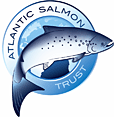Workshop sessions
Topic 1. General overview – role of fluvial geomorphology in water resource management over last four decades.
- How has the role of fluvial geomorphology in river management changed over the last several decades?
- What direction should the role of geomorphology in water resources management take in the next 10-20 years, considering recent legislation?
[NOTE: Tom was our initial introductory keynote speaker but, unfortunately, had to withdraw at short notice. Colin Thorne very kindly agreed to step in and presented the first address]
Tom Dunne, UC Santa Barbara.
Contributions of geomorphic principles to understanding aquatic ecosystems: the shift from static scaling relations to dynamic coupling.
In the 1970-1980s, fluvial geomorphology provided aquatic ecologists with certain principles expressed as scaling relations between stream habitat conditions and environmental variables such as climate (streamflow) and drainage area. The scaling concept eventually led to stream classification systems that also scale largely with drainage area and provide guidance for estimating habitat conditions and for their restoration. These relations provide expectations for how the amount and quality of habitat should vary geographically within watersheds in homogeneous regions. In the past two decades, these statistical relationships have been augmented by more detailed studies of channel and floodplain processes, including their interaction and transient nature. The idea of one-way effects of habitat physics on the quality of habitat has also given way to the appreciation of two-way coupling between physical and biological factors interacting to produce the dynamic complexity that is thought to favor productivity and diversity at the level of biological communities within landscapes. Two important challenges for geomorphologists and biologists are how to conduct research that will improve quantitative prediction of these dynamic interactions and how to facilitate data collection that can be used by managers to operationalize the new understanding.
Topic 2. Legislative/ Management needs
|
Updated: 23 Jan 2024, Content by: HM
|






